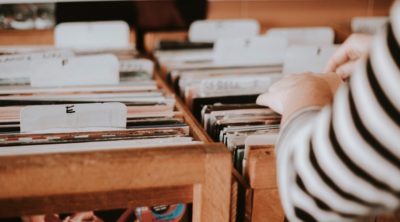
Equipping a home studio is not as hard as you may think. You will only need a handful of basic equipment to make powerful music.
The world’s first sound card called AdLib Music Synthesizer Card, or simply AdLib, was developed in 1990.
Technology has made it possible for musicians to create and record their work within the comfort of their homes. To actually book a slot in a professional recording studio can prove expensive and rushed. Since artists are usually billed for every hour they use the studio, the end expense for recording even a single track can prove unaffordable for many talented musicians. Fortunately and slowly but surely, musicians like you can start small and build on your home studio by buying music recording equipment. This Melodyful guide discusses some must-have home recording studio equipment.
Whether you’re recording at home or in a professional setup, you will inevitably end up taking multiple audio takes until you finalize on one. Until you get the perfect recording, the backups you save will help you assess and find faults in the pitch, tone, and scales of the recording.
You will need a computer, preferably a desktop that has a minimum of 2 – 4 GB RAM and a hard disk capacity of 300 – 500 GB.
Go in for a computer that is designed for upgrades and will accept multiple processing cards while running a music recording software. Whether you go in for a Mac or PC, it will depend on your needs and budget.
Perhaps the second-most important component of any recording studio, an audio interface allows you to plug the sound source to itself through Firewire or USB. Being more like a sound card, an audio interface provides additional storage space, which prevents the computer’s processor from getting overburdened. You will need an interface that is equipped with sufficient number of inputs that can record sound sources such as vocals, drums, bass, etc. Each sound source usually requires its own microphone and inputs. However, sometimes some instruments such as drums and sound sources such as vocals require multiple microphones in order to capture a fuller recording and sound.
No recording studio is complete without a microphone. Whether you plan on recording vocals or providing additional volume to a musical instrument, a microphone can get the job done. Go in for a microphone that offers switchable omnidirectional, cardioid, and bidirectional (figure-8) polar patterns. While a dynamic microphone will be more suitable for capturing loud and solid sounds from the drums, bass, and guitar, a condenser microphone is appropriate for recording vocals. Since condenser mikes are extremely sensitive and capture the slightest of sounds and vibrations, it would be advisable to buy a suspension shockmount and pop shield.
Studio monitors are meant for reference monitoring the recorded sound in a studio ambiance. Unlike stereo speaker, such monitors present the source audio exactly as it was captured with minimalistic coloration. Secondly, studio monitors are able to reproduce lower frequencies that can help ascertain whether the source audio has too much or insufficient bass tones. Such monitors help the artist prepare an accurate mix down of the sound.
Studio headphones like studio monitors are designed to provide a near flat response and reproduce lower frequencies. This studio equipment can come in handy when you wish to scrutinize the source audio, check whether the sounds are equalized and on metronome. Headphones are needed when you do not wish to disturb the people around you or wish to keep your work private.
Music software have empowered musicians from all across the world and made it possible for them to record and embellish their songs. With thousands of programmed sounds of various musical instruments, the user simply has to select the ones needed and layer it with the main audio source. Without such a software, it would be impossible to add layers to their composition and listen to them individually.
The aforementioned were the must-haves; however, certain other essentials such as additional microphone stands, a soundproof recording room, and sufficient XLR connectors are some other things every studio must stock.


